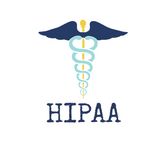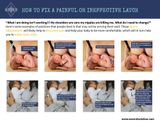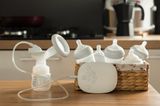Colic is so hard for everyone in a family. It can really shatter that lovely image you had of holding your sweet baby and glowing with joy and replace it with anxiety, exhaustion and stress. It is hard to see your new sweet little one so unhappy and not be able to do anything about it.
It is however, a common condition that affects babies and can be a source of distress for both the baby and the parents. It is characterized by excessive crying and fussiness, often without an apparent cause. The condition usually begins at around two to four weeks of age and resolves by three to four months. While colic is not harmful to the baby's health, it can be emotionally taxing for parents and can interfere with the quality of life for the family. In this article, we will explore the different approaches to treating colic, including natural remedies, behavioral interventions, and medical treatments.

Higher rates of postpartum depression in parents who’s babies have colic
Colic is such a challenging and stressful experience for parents, especially if it persists for weeks or months. The constant crying and fussiness can lead to feelings of frustration, exhaustion, and helplessness, which can in turn contribute to postpartum depression (PPD).
PPD is a common mental health disorder that affects many new parents. It is characterized by feelings of sadness, anxiety, and fatigue that persist for several weeks or months after giving birth. PPD can be triggered by a variety of factors, including hormonal changes, sleep deprivation, and the stresses of caring for a newborn.
When a baby has colic, parents may experience increased levels of stress and sleep deprivation, which can exacerbate symptoms of PPD. The constant crying and fussiness can also make it difficult for parents to bond with their baby, which can further contribute to feelings of sadness and anxiety.
It is important for parents who are experiencing symptoms of PPD to seek support from their healthcare provider, a mental health professional, or a support group. Treatment for PPD may include therapy, medication, and self-care strategies such as exercise, healthy eating, and adequate sleep.
In addition to seeking support for PPD, parents of babies with colic may benefit from seeking support from family members, friends, or other parents who have experienced colic. Joining a support group or seeking the advice of a healthcare provider or lactation consultant can also be helpful in managing the challenges of caring for a baby with colic.
Natural Remedies
Natural remedies are a popular approach to treating colic, as they are often safe, easy to use, and do not have the side effects associated with pharmaceuticals. Some of the most common natural remedies for colic include:
- Probiotics: Probiotics are live bacteria and yeasts that are beneficial to the digestive system. Studies have suggested that Lactobacillus reuteri may help to alleviate colic symptoms by promoting the growth of healthy gut bacteria and reducing inflammation. Probiotics can be given to the baby through breast milk or formula, or in the form of a supplement. Each probiotic has different strains of bacteria, make sure you are getting one with Lactobacillus reuteri. Studies showed that probiotic treatment was much more effective than the commonly prescribed Simethicone drops.
- Herbal remedies: Herbal remedies, such as chamomile, fennel, and ginger, have been traditionally used to treat colic. These herbs are thought to have anti-inflammatory and calming properties, which can help to soothe a fussy baby. They can be given to the baby through specially formulated colic remedy available online and at most natural food stores.
- Massage: Massaging the baby's abdomen in a clockwise direction can help to relieve gas and constipation, which are common causes of colic. Massaging can also promote relaxation and help to calm a fussy baby. This works especially great in conjunction with a bath and little oil. I usually recommend a simple oil that is food safe, such as coconut or avocado oil. You can use olive oil and it has some great anti-fungal properties but your baby ends up smelling like a salad.
- Warm baths: A warm bath can help to relax the baby's muscles and promote digestion.
- Craniosacral therapy: Craniosacral therapy (CST) is a complementary therapy that studies report is effective at treating colic. CST involves the use of gentle, non-invasive touch to manipulate the bones of the skull, spine, and pelvis to promote the free flow of cerebrospinal fluid and restore proper nervous system function. During a CST session for colic, the therapist may gently manipulate the baby's skull, spine, and pelvis to release any restrictions or blockages in the craniosacral system. The therapist may use very light pressure and gentle, rhythmic movements to promote relaxation and release tension in the baby's body. The duration and frequency of CST sessions for colic may vary depending on the severity of the baby's symptoms and the recommendations of the therapist. Some practitioners may recommend weekly or bi-weekly sessions for several weeks, while others may recommend a more individualized approach based on the baby's needs.
Before giving your baby anything that isn't human milk or formula before 4 months or giving any therapeutic supplements please have a conversation with your care provider.

Behavioral Interventions
Behavioral interventions are another approach to treating colic. These interventions focus on changing the environment or the behavior of the caregiver or the baby. Some of the most common behavioral interventions for colic include:
- Swaddling: Swaddling is the practice of wrapping the baby tightly in a blanket. This can help to simulate the feeling of being in the womb, which can promote relaxation and comfort. Swaddling can also help to prevent the baby from flailing their arms and legs, which can repeatedly activate the Moro reflex which is startling for them. While there are some downsides to swaddling, which I will touch on in a future post, some babie do really seem to need to have that tight proprioceptive imput.
- White noise: White noise, such as the sound of a fan or a vacuum cleaner, can help to soothe a fussy baby. White noise works by creating a familiar and consistent background sound that can help to mask other noises and promote relaxation.
- Car rides: Many babies find the motion of a car ride soothing. Taking the baby for a short car ride can help to calm them down and promote relaxation. (This is apparently the only thing that worked for me when I was a baby with colic)
- Changing feeding habits: Changing the feeding habits of the baby can also help to alleviate colic symptoms. Feeding the baby in an upright position can help to prevent the baby from feeding too quickly and swallowing air, which can cause discomfort. Paced bottle feeding can also help to follow the babies cues for breaks or when they are done feeding. I have a series of instagram videos to show you how to do this. Feeding the baby smaller, more frequent meals can also help to promote digestion and prevent overfeeding.
Medical treatments
In some cases, medical treatments may be necessary to treat colic when natural remedies and behavioral interventions have not been effective. Here are some of the most common medical treatments for colic:
- Probiotics Lactobacillus reuteri: I am going to repeat this one because there is pretty good evidence out there (I have linked some studies at the end of this post) that it is helpful and most providers don’t know about it. It is also a relatively straightforward and affordable intervention.
- Acid-suppressing medications: In some cases, colic may be caused by gastroesophageal reflux disease (GERD). Acid-suppressing medications such as ranitidine, omeprazole, or esomeprazole can be prescribed to reduce the amount of acid in the baby's stomach and alleviate symptoms. These are medications with some potential negative effects make sure you weigh the cost benefit analysis with your doctor.
- Simethicone drops: Simethicone drops are an over-the-counter medication that can help to relieve gas and bloating in babies. Simethicone works by breaking up gas bubbles in the digestive tract, which can help to alleviate discomfort. This is probably what I see pediatricians recommending most often but from the studies I have found and the parent reports I have heard it isn’t the most effective.
- Allergy testing: In some cases, colic may be caused by an allergy to cow's milk or other foods. If an allergy is suspected, the baby may undergo allergy testing to determine the cause of the symptoms. Eliminating the allergen from the baby's diet can help to alleviate symptoms.
References
- Colicky baby? Here’s a surprising remedy
- Treatment of infant colic with craniosacral therapy. A randomized controlled trial - PubMed
- Colic - PubMed




